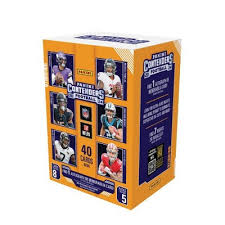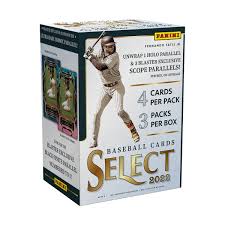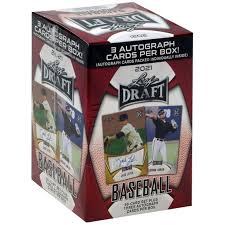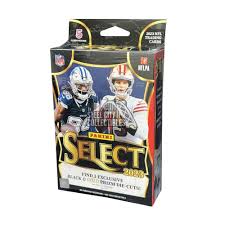

Autographed cards – especially TTM autographs – are a staple of the hobby. While you can pull an autographed card from several subsets, there’s a unique charm to TTM autographs.
You stand a chance of getting hand-signed autographs of specific players you fancy and at much lower prices (free in most cases). However, while TTM autographs might sound simple in their execution, there’s a lot that goes into it to ensure you achieve success.
This article shall cover everything you need to know to get started collecting TTM autographs.
TTM stands for “through the mail,” so TTM Autograph Collecting is simply collecting autographs through the mail. It’s a common and relatively stress-free way to collect the autographs of your favorite athlete — for free (or at minimal cost).
The principle is simple — you write a letter of request (LOR) to your chosen athlete or player, asking them for an autograph in return, and hopefully, within days or weeks, you will receive your card or item back signed.
The items you need to start collecting through the mail autographs are simple and easy to get. Here’s a list of things you will require to get started:

The basics of TTM autographs are simple. You decide on a player whose autograph you want, write them a letter along with the item you want the autograph on, mail it and wait for a reply.
While this sounds easy, you must follow several steps to increase your chances of getting your card signed.
Before you get started collecting TTM autographs, you should create a list of players whose autographs you want to collect. While a list is good for helping you stay focused and productive, it is also helpful for several reasons.
Creating a list is an essential step in the TTM process. Being realistic increases your success rate. While sending a through-the-mail autograph request is relatively cheap, it adds up quickly if you multiply it by several players.
The best policy when collecting TTM autographs is to aim low to avoid disappointment. While you might want high-profile autographs from the biggest stars, those guys are constantly bombarded with requests and might never get around to your turn.
It is best to target players who aren’t likely to get tons of requests or high-ranking prospects before they break out. These players are more likely to read your letter and return your request.
While high-profile athletes are signing TTM requests, these are “one in a million” occurrences. You can decide to take a shot at it. However, you shouldn’t expect a response.
Not all athletes sign autographs through the mail. Luckily, TTM autograph collecting is an industry in its own right, and collectors worldwide share their experiences. Websites are dedicated to checking which athletes are more likely to sign your autograph request.
Collectors who have sent TTM requests to these athletes track their successes and failures so that you can save time. A quick Google search would bring relevant websites where TTM successes are tracked. However, the ones below are the most common and are used by thousands of TTM autograph collectors.

It would help if you researched all you could about a specific player before mailing your cards to them. Sports Collectors is an excellent resource for this. Once you sign in and search for a particular player, it shows you everything about the player.
Most players charge a fee for their signatures or donations to a specified charity. Some have specific cards they will or won’t sign or charge more for their Rookie cards. There’s so much detail about a player; it’s all on Sports Collectors or any similar websites.
For athletes that require a specific amount for signatures, put the stipulated sum in the envelope. This is tricky for players who demand a donation to their charities. While some want the check made out to the charities, others would require you to make it out to them. Your best bet is to make the check out to the athlete when sending a TTM request.
The next step is to write a letter of request to the selected athlete, asking that they sign your card. This is usually the most confusing part for most people as they are overdoing it. While different people’s opinions may differ on how to write a letter, the universal trick is to make it personal and keep it brief.
An average athlete is usually busy and might only have time to read a few pages. Additionally, ensure you “WRITE” the letter rather than “TYPE” it. It gives it a personal touch, and the success rates of written letters are higher than typed letters.
Here’s a template you can use to write your letter of request.
Introduction
Briefly introduce yourself and tell the athlete you are a huge fan, follow their team, or love watching them on TV.
A few good introductory paragraph templates are below.
“My name is “Your Name,” I am from “Your State and City.” I am a big fan of yours and enjoy watching you on TV. It’s my dream to meet you in person and take a picture.”
“My name is “Your Name,” and I live in “Your State and City.” I remember you from when “include a highlight of a possibly memorable achievement.” Thanks for the baseball memories.”
“My name is “Your Name,” and I was a huge fan of yours as a kid, especially when you played for the “Insert Team.”
Your introduction should have three short sentences at most. One sentence to state your name and one to state why you’re a fan.
Main paragraph
The main paragraph should contain the reason you’re writing the letter – to request an autograph. You should always ask politely if you hope to have a great success rate. A saying goes,
“You’ll get more flies with honey .”
As always, keep it short and limited to a single sentence or two. An example of some good main paragraphs is below.
“Would you please be kind enough to sign the cards I’ve enclosed with this letter?”
“I’d love it if you, please sign the enclosed card.”
“I would love to get your autograph since you’re my favorite “INSERT SPORT” player.”
“It would really me a lot to me if you sign the enclosed card as it’s my favorite yours.”
This should be plain and straight to the point. Avoid using long sentences. While most believe you should schmooze the player, it’s best to be genuinely polite and keep the letter brief.
Conclusion
Round up the letter by thanking the athlete for their time or wishing them the best in the rest of the season. You could also wish them compliments of the season if you’re writing during the holidays.
“Thanks for taking out a few minutes from your time to read this letter and sign my card.”
“Thank you very much for reading this, it means a lot to me. I wish all the best to you and your family.”
“Thank you very much.”
End the letter by writing your name and signing it. It’s always a nice touch to sign your letters of request. This is especially important if you’re sending a typed letter rather than a handwritten one.
The template above is just that, a template. You can make it longer or more personal to suit your needs. You should get a response as long as you’re polite, no matter how long your request letter is.
Once your letter is ready, you must assemble everything in a package. You need the following three items for every TTM autograph request you want to send.
This envelope would contain everything (card, smaller envelope, and letter of request) and be addressed to the player. Your return address should also be on it. A peel-and-seal envelope is recommended because it’s much easier to use.

The player would use this smaller envelope to send your cards back to you once it’s been signed. You must include the stamp on the return envelope, or you might not get it back. Experts recommend using Forever stamps as while most players sign requests immediately, there’s been instances of players signing cards two years after collectors sent them.
The return envelope must be a self-addressed stamped envelope (SASE). This means you must write the envelope out to yourself with your address in both address locations (to and from) with the stamp on it.
Once the card has been signed, the player would simply put it in the return envelope, seal it and drop it in the mailbag. The easier you make it for them, the higher your success rate.

This is the card you want the athlete to sign on. While you can send any card, there are rules as to which card you can send to whom. A rule of thumb is to only send a card you’re willing to lose, as there’s no guarantee of getting your card back.
While you might want the athlete to autograph the most expensive card you own, you might lose it in the mail.
Beckett recommends sending index or sketch cards that are worth a few cents. However, you can risk sending expensive cards to players with high success rates on Sports Collectors.
To be safe, you should only send an expensive card to players with a 90% success rate. Avoid sending cards in top loaders, as there’s a high chance of the athlete signing your toploader rather than the card.

Experts also advise against sending super glossy cards, as the ink doesn’t stay well on glossy cards. However, we shall cover a few tricks to “degloss your cards” later in this article.
Lastly, limit your TTM request to not more than two signatures. It’s best to send one card per request. Anything more comes off as greedy or inconsiderate and might put off the athlete. If you require many signatures, send multiple requests for them spaced at different intervals.
Most players require a specific sum before signing a TTM autograph request. Put the money into the envelope where it can be seen when opened. They’ll usually ask for a donation to a charity they own or are affiliated with.
When donating to a charity, write a cheque to the player and insert it in the envelope. The money or cheque should be placed so that it’s the first thing they see once they open the envelope.
Once you have your request letter, the item you want to be signed, and your SASE return envelope, it’s time to mail it to the selected athlete. When writing to current players during the season, their team’s address is the best place to send the TTM letter.
While the odd player might sign a request sent to their home address, A LOT of players do not respond to TTM requests sent to their home address. Several have come out to condemn it, calling it rude and invading.
Address the larger envelope to the team’s address. You should write their full address as a recipient and your address as the sender. Use the following format when sending to a team’s address.
Player
c/o Team
Street Address
City, STATE Zip
Or, a more practical example:
Daniel Hudson
c/o Dodgers Stadium
1000 Elysian Park Avenue
Los Angeles, CA 90012-1199
A quick Google search would bring out the TTM addresses of the various teams across all sports. You can also use the links below:
You can use the home address if sending a TTM request letter to a retired player. You can find the home addresses for any player using the websites below. While a Google search might show you the player’s address, most players have more than one home.
Websites such as Fan Mail or Sports Collectors show you the success rates for each player’s address. You want to send your letters to an address the player typically responds to.
Address the larger envelope to the player’s address. You should write their full address as a recipient and your address as the sender. You should address the smaller SASE envelope to yourself. Write your address twice on it, both as the sender and the receiver. Insert everything into the large envelope and send it on its way.

The next step after mailing your TTM request is to wait for a response. You never know when a request will be fulfilled, as even people with 100% success rates might take a while to get to it. Not every player will sign, and some can take months to get back to you. That adds an extra bit of delight to TTM autograph collecting.
Most of today’s cards come with that glossy sheen collectors know and love. While it’s great to look at, gloss and sharpie are like oil and water and do not mix well together.

Not prepping your glossy card before sending it for an autograph might render all your effort useless. Imagine waiting months for a particularly tough-to-get autograph only to see it ruined because the ink isn’t sticking to the card. Luckily, there are several simple processes to make your glossy cards autograph-ready.
Gently rub the card’s surface with the eraser for a few seconds. Do not apply force, as you risk damaging the cards. Once you’ve covered the card’s surface area, use a cloth to remove the eraser remnant from the card’s surface.
First, gently wipe the card’s surface with the dryer sheet for a few seconds. Then, using the Kleenex sheet, give it another wipe-over.
While both methods above are great for single cards, this method is perfect if you have a lot of cards to degloss. Apply baby powder to the surface of your card and then wipe it off. This method can be used to degloss hundreds of cards at a time.
While any of these methods would degloss your cards and get them ready to be autographed, we recommend the powder method. With the eraser method, there’s a risk of scratching out more than the glossy sheen when too much pressure is used. Even when done right, some collectors have said their cards look “dull” when they use the eraser method.
Cards deglossed with baby power turn out perfect and leave the card still looking great. While the powder method may take longer and might create a mess, it is worth the extra effort.
Most collectors believe that TTM autographs shouldn’t be sold, especially if the player didn’t take a fee for signing them. We shall not talk about the ethics of selling a TTM autograph. However, we shall discuss the value of TTM autographed cards.
TTM falls under “Third-party autographs,” and all collectors agree that having a player sign a card boosts its value. While you’ll find someone ready to buy your TTM autographed card, it’ll likely cost less than a certified autograph.
One way to increase the value of your TTM autographs is to get them authenticated and slabbed. Sadly, scammers are everywhere in the hobby, and anyone can claim that their card was signed by a player when it wasn’t.
The only way to know for sure is to get your autographed cards authenticated. Various companies provide autograph authentication services. However, the most reliable are BSG and PSA. You should also check with the card shops around your area, as a few have authenticators from Beckett of PSA who come by frequently and authenticate autographs.
After they authenticate the autograph, they will provide you with an authentication certificate. If you want your card slabbed, send it to the grading company.
Again, while autographs add monetary value to cards, the real value in TTM autos is in the sentiment and emotional stories behind each TTM autograph success story. The joy of writing to these players, anticipating their return, and delight in getting your card signed is a unique and unbeatable experience.
The current state of the hobby might make it appear like it’s been drained of fun for the average collector without a big budget. However, TTM autograph is an aspect that freely gives as much happiness as it gave several decades ago.
Of course, not all TTM requests will be successful. There will be times when your cards wouldn’t be returned or wouldn’t be autographed by the player. However, this makes it much sweeter when you receive a signed card.
While most players would request a donation before signing your cards, it is far cheaper than spending thousands of dollars on certified signed cards. Indeed, it might be hard to start, but TTM collecting is addictive and hard to stop once you get the hang of it.
Sometimes, a player might refuse to sign a card for various reasons. Jeff Baker of Sports Collectors Daily has compiled a list of such players and the cards they won’t sign. While this doesn’t cover every player, a quick Google search with a specific player’s name would let you know if there’s a card they do not sign.
| Al Nipper | 1985 Donruss; the photo is Mike Brown |
| Andy Hawkins | All Fleer cards |
| Archie Bradley | 2012 Topps Heritage Minors, 2012 Bowman Platinum; the photo is J.R. Bradley |
| Bo Jackson | 1990 Score bat and shoulder pads; copyright issues with the photo |
| Bob Montgomery | 1975 SSPC; unauthorized card |
| Butch Metzger | 1991 WIZ Mets |
| Carlton Fisk | 1991 Score Record Breaker |
| Chone Figgins | Seattle Mariners items |
| Danny Jackson | 1985 Donruss; the photo is Frank Wills |
| David Wells | Any cards other than Blue Jays ones |
| Dmitri Young | 1993 Upper Deck; doesn’t like photo |
| Doug Flynn | 1986 Topps |
| Ed Glynn | 1983 Fleer; the photo is Bud Anderson |
| Fernando Rodney | 2007 Topps, 2009 Topps Tigers Team set; the photo is Roman Colon |
| Floyd Bannister | 1985 Donruss; photo is Tom Seaver |
| Gary Pettis | 1985 Topps; card depicts his brother Lynn |
| Greg Swindell | 1991 Studio; the photo is Tim Costo |
| Gregg Zaun | 2006 Topps; the photo is Jason Phillips |
| Hanley Ramirez | 2006 Topps 52; the photo is not him |
| J.C. Romero | 2011 Topps Update; he never played for the Yankees |
| James McCann | 2016 Topps Heritage |
| Jim Morrison | 1981 Topps; doesn’t like the photo |
| John Hiller | 1966 Topps |
| Keith Hernandez | Cleveland Indians items charged a premium; he did not like his time playing there. |
| Kelly Gruber | All Leaf cards |
| Ketel Marte | 2016 Topps Heritage |
| Kevin Romine | 1989 Fleer; the photo is Randy Kutcher |
| LaTroy Hawkins | San Francisco Giants cards, insert cards, Japanese cards |
| Luis Rivas | 2001 Bowman Heritage; the photo is Jacque Jones |
| Mark McGwire | Will not sign items with Jose Canseco |
| Mark McLemore | 1994 Score |
| Mark Teahen | 2005 Upper Deck SP; the photo is Chris Lubanski |
| Marty Barrett | 2004 Topps All-Time Fan Favorites; claims some contractual agreement TTM, but will sign through private signings |
| Miguel Dilone | 1978 Topps, if signed by others already |
| Mike Cameron | 2004 Topps Gold Glove; the photo is Randy Winn (will sign back) |
| Oddie McDowell | Cleveland Indians items |
| Orlando Hudson | 2008 Allen & Ginter; photo is Alberto Callaspo |
| Reggie Jefferson | 1992 Triple Play; the photo is Stan Jefferson |
| Rick Miller | 1984 Donruss; name is wrong on it |
| Rodney Scott | 1982 Fleer; the photo is Tim Raines |
| Ron Gant | Will not sign items showing David Justice |
| Ron Kittle | 1984 Topps gets charged a premium; the fee goes to a charity |
| Ruben Sierra | Oakland A’s items |
| Rusty Greer | 1997 Skybox Metal Universe; wrong photo (will sign back) |
| Sparky Lyle | 1976 SSPC; unauthorized card |
| Steve Busby | 1975 Topps; signs but also writes “Not My Photo” on it, as the photo is Fran Healy |
| Steve Garvey | 1982 Fleer |
| Wes Chamberlain | 1991 Topps error; the photo is Louie Meadows |
I deep-dove on Fanatics Collect so you don't have to (but should you?)
Panini is launching a WNBA Product at $30,000!?
Topps Chrome 2024-25 Basketball: Honest Review and Notes
Did you know this SECRET about PSA slabs? #sportscard #tcg
5 EASY tips to make more money on eBay sports cards.
I opened a sports card mystery box and found something AWESOME inside
The SAD story of Collectable. What went wrong? (The Downfall Fractional Sports Card Investing)
what was Panini doing? 🙄





2022 Topps Heritage Baseball Blaster Box Configuration: 7 Packs per Box – 9 Cards per Box. Plus 1 extra pack.











Keep up on breaking Sports Card News, our latest articles, product specials and exclusive content with expert analysis of hobby trends.

© Copyright 2025 - All rights reserved Cardlines.com / Media Techs LLC - Sports Card News, Reviews, Releases and BREAKS - #thehobby.
Important: When you click on links to various merchants on this site and make a purchase, this can result in this site earning a commission. Affiliate programs and affiliations include, but are not limited to, the eBay Partner Network.
I Tested eBay Auction Promotions So You Don’t Have To!
Cardlines June 30, 2025 7:01 pm